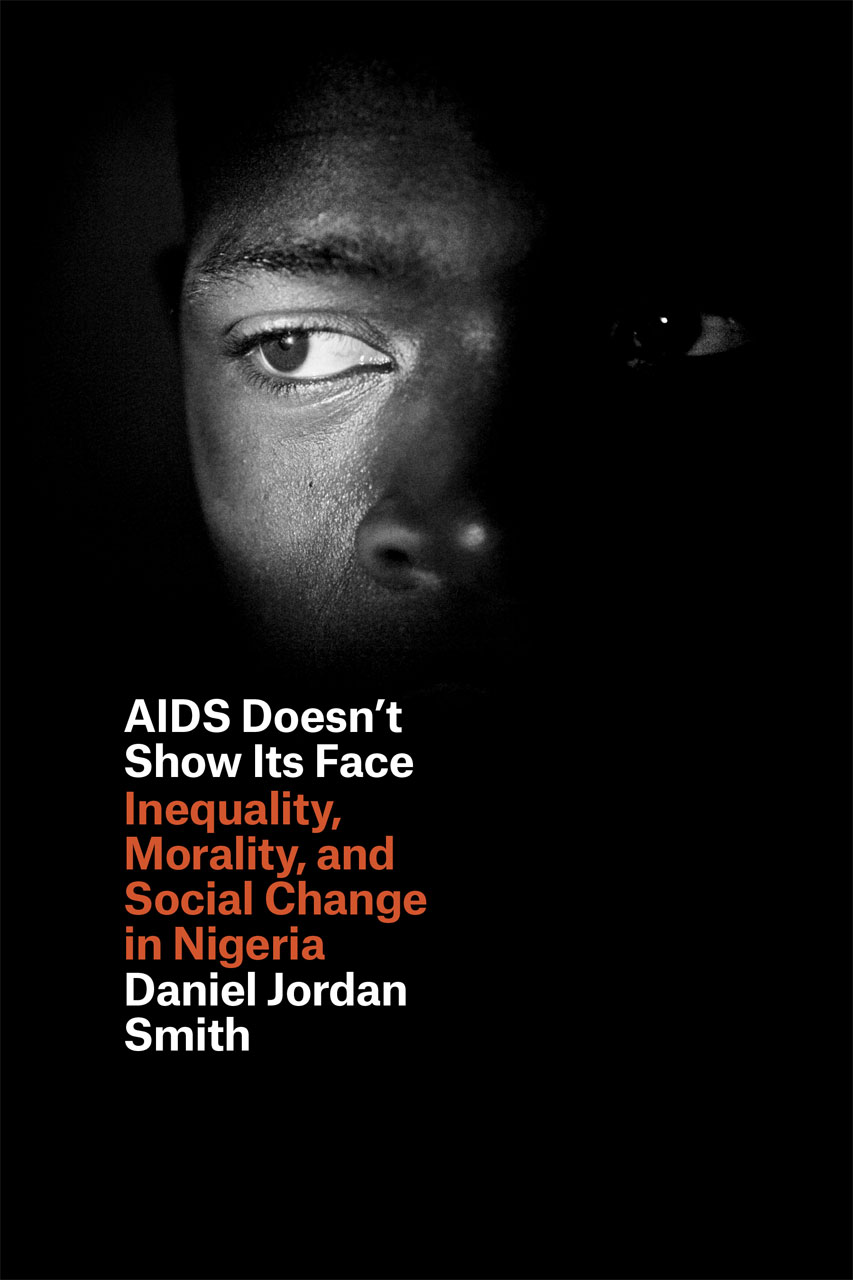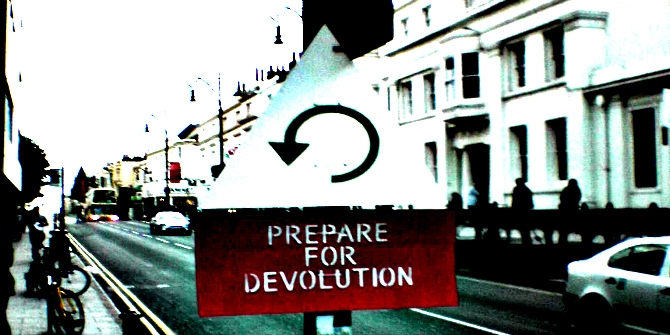Sharon Jackson finds that Daniel Jordan Smith’s AIDS Doesn’t Show Its Face should draw readers from anthropology, sociology, international development, global health, social psychology, cultural studies, human geography and African studies. The book convincingly relates AIDS to broader inequalities and transformations in modern society.
 AIDS Doesn’t Show Its Face: Inequality, Morality, and Social Change in Nigeria. Daniel Jordan Smith. University of Chicago Press. 2014.
AIDS Doesn’t Show Its Face: Inequality, Morality, and Social Change in Nigeria. Daniel Jordan Smith. University of Chicago Press. 2014.
Making excellent use of 23 years of research and experience in Nigeria, in AIDS Doesn’t Show Its Face Daniel Jordan Smith produces a perceptive, insightful, and quietly compelling account of the intersections of AIDS with broader issues of social change, inequality, injustice, and moral values in Nigerian society. The book gives great insight into the specific moral dimensions of AIDS in Nigeria, and its deeply knowledgeable and detailed account of this context, combined with broader analysis applicable to many settings, makes it a welcome addition to the literature. It goes well beyond many studies of AIDS in Africa through its focus on social change, and while not always entirely convincing, it makes compelling points about how AIDS and anxieties about modern social transformations in Nigeria are significantly intertwined.
The Introduction argues that modern social and economic inequalities, morality, and AIDS are strongly linked in the beliefs and actions of Nigerians, and that AIDS thus offers an exemplary entry point into understanding these larger social concerns. The book aims to “observe and unravel the connections between people’s anxieties about AIDS and their much broader ambivalence and unease about the consequences of wider social changes” (p. 11). Smith explicitly wishes to counteract exoticizing and catastrophizing portrayals of Africa, still unforgivably common. Instead he uses Nigerians’ attitudes and responses to AIDS as a window offering a truer view of their country and continent.
The six chapters each address an area of everyday life in Nigeria marked by profound social transformation, and where Smith has found that people’s responses to AIDS provide deep insights into wider social processes. A key strength throughout the book is its wide-scale social analysis, using findings from several large, long-term or in-depth thematic studies Smith has conducted, woven together with compelling ethnographic accounts of individuals drawn from his extensive anthropological experience.
The first chapter examines urban and informal economies, particularly the lives of okada men, motorcyclists who transport people around the city on the seats of their motorbikes – a dangerous but profitable business. Chapter two dissects gender inequality and the intersections of sex and money, especially for young women working in urban centres and married men in extramarital relationships. Later chapters address religion, primarily evangelical and Pentecostal Christianity and their preachers; civil society, through an examination of AIDS NGOs and corruption in various forms; and kinship, which remains centrally important in Nigerian social relationships. Chapter six focuses on having children and the social and biological reproductive processes that are problematised and pursued by those living with HIV. The conclusion revisits each topic before emphasizing the importance of inequality and suggesting actions that respond to “the social face of AIDS” (p. 170-174).
Okada motorcycle drivers are humorously named after Okada Air, a Nigerian airline owned by a businessman and a symbol of immense wealth and inequality. A popular rumour is that upwardly-mobile, cash-poor female university students will have sex for money with the lower class, cash-ready okada men. While Smith concludes this is “more urban legend than fact” (p. 33) the rumour’s social significance and implications about attitudes to HIV risk are substantial. Young men with few prospects become okada due to heavy economic pressures, yet for socially beneficial goals such as supporting family. Politicians target okada for support, they are suspected of criminal behaviour, and most people welcome their later banning as beneficial to safety and public order. The chapter certainly illustrates that okada are emblematic of inequalities, social tensions, political maneouvering and economic desires in Nigeria. These appear analogous to Nigerians’ responses to AIDS, but, strangely, little evidence is offered for direct relationships of okada to AIDS, beyond the rumour and occasional visits to sex-workers, and thus the analogy is not entirely convincing.

The chapter on NGOs “feeding fat on AIDS” (p. 103-107) examines the huge influx into Nigeria of international donor funding to tackle AIDS. It is illustrated by three NGO leaders. The first is widely seen as corrupt and engaged in theft of NGO funds, and ultimately despised not for this but for his selfishness and lack of support to his social network. The second does deliver the NGO’s promised activities while using some project resources for personal gain. As this is done in a pro-social way, there are critiques but also praise from her peers and staff. The third is a NGO admired by the author, whose leader shows high integrity and which provides substantial services to people living with HIV. This NGO is later riven by divides over applying for and managing international funds. This chapter does a good job of illustrating how AIDS-related activities both reveal and exacerbate inequalities and entrenched social norms in Nigeria.
As Smith underlines, we should not forget the immense human suffering and loss of life caused by AIDS in Nigeria and other African countries, and the decades of continued impacts ahead, given current prevalence. I believe that we also need to learn from AIDS and its connections to wider social problems, in ways that go beyond focusing on a single disease, contribute to broader understanding of human society, and are relevant for future development. Smith’s very good book explicitly aims towards these goals and does partially achieve them, but could have made a stronger case for both continuing to respond to AIDS and learning its lessons for inequality and other significant social concerns.
Smith is certainly correct that responses to AIDS provide interesting insights into concerns Nigerians have about the massive social changes they are experiencing. However, I was less persuaded that AIDS is exceptionally emblematic of such anxieties, or that AIDS is a particularly important component of social change. Smith notes that in Nigeria HIV prevalence remains relatively low at 3.6%, but rightly observes that the symbolic and moral weight given to AIDS exaggerated its importance in social discourse beyond its epidemiological reality. Yet one still wonders, given this reality, how essential AIDS is to Nigerians’ views of social change, and how relevant it will be in future.
The moral weight, and moralizing, of AIDS in Nigeria is compellingly demonstrated and Smith’s analysis of this setting is very valuable. His more general point is not new, as for the last thirty-odd years discussions of AIDS have had a strongly moral flavour, often associating the disease with ‘bad’ behaviour, particularly with the ‘wrong’ kinds of sexual activity. AIDS has been portrayed frequently as punishment for an individual’s ‘immoral’ lifestyle, and as punishment of society for its wayward ways. While he elaborates in the Introduction, more depth would have been useful on how this work diverges from the large body of existing literature about the moral dimensions, and implications, of AIDS.
On morality within broader social and economic relations in Nigeria and elsewhere in Africa, Smith cites James Ferguson, and the classic work of James C. Scott on ‘moral economy’ could also be relevant. He references Philip W. Setel, whose excellent 1999 ethnography of AIDS as a “plague of paradoxes” in northern Tanzania would complement this book. Going beyond references to Africa in the conclusion, specific parallels with other countries will make interesting future comparisons.
Unusually in academic publishing, this relatively slim volume would have been even stronger had it been longer, especially regarding NGOs, and rural-urban migration. Overall though, this is an insightful, stimulating, and engrossing read, which will be useful to academics and students, relevant for policy or development professionals and lively and accessible enough for more casual readers interested in understanding a changing Nigeria.
Sharon Jackson is a PhD candidate in the Department of Social Psychology at the London School of Economics and Political Science (LSE). Her doctoral research focuses on community responses to HIV and climate change in Tanzania. She has over ten years of professional experience working in academia and with NGOs on HIV and AIDS, international development, global health, gender and climate justice. Read more reviews by Sharon.






